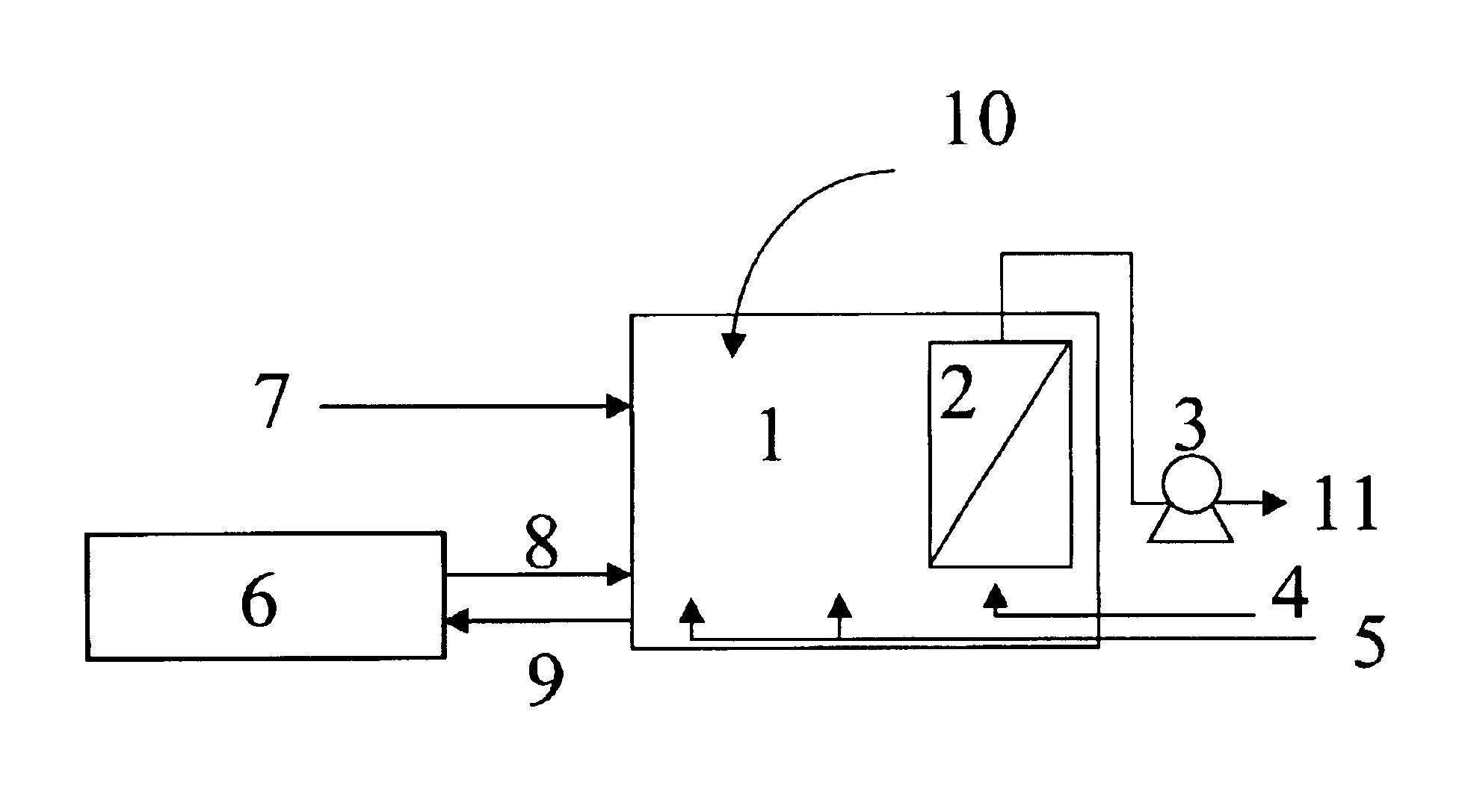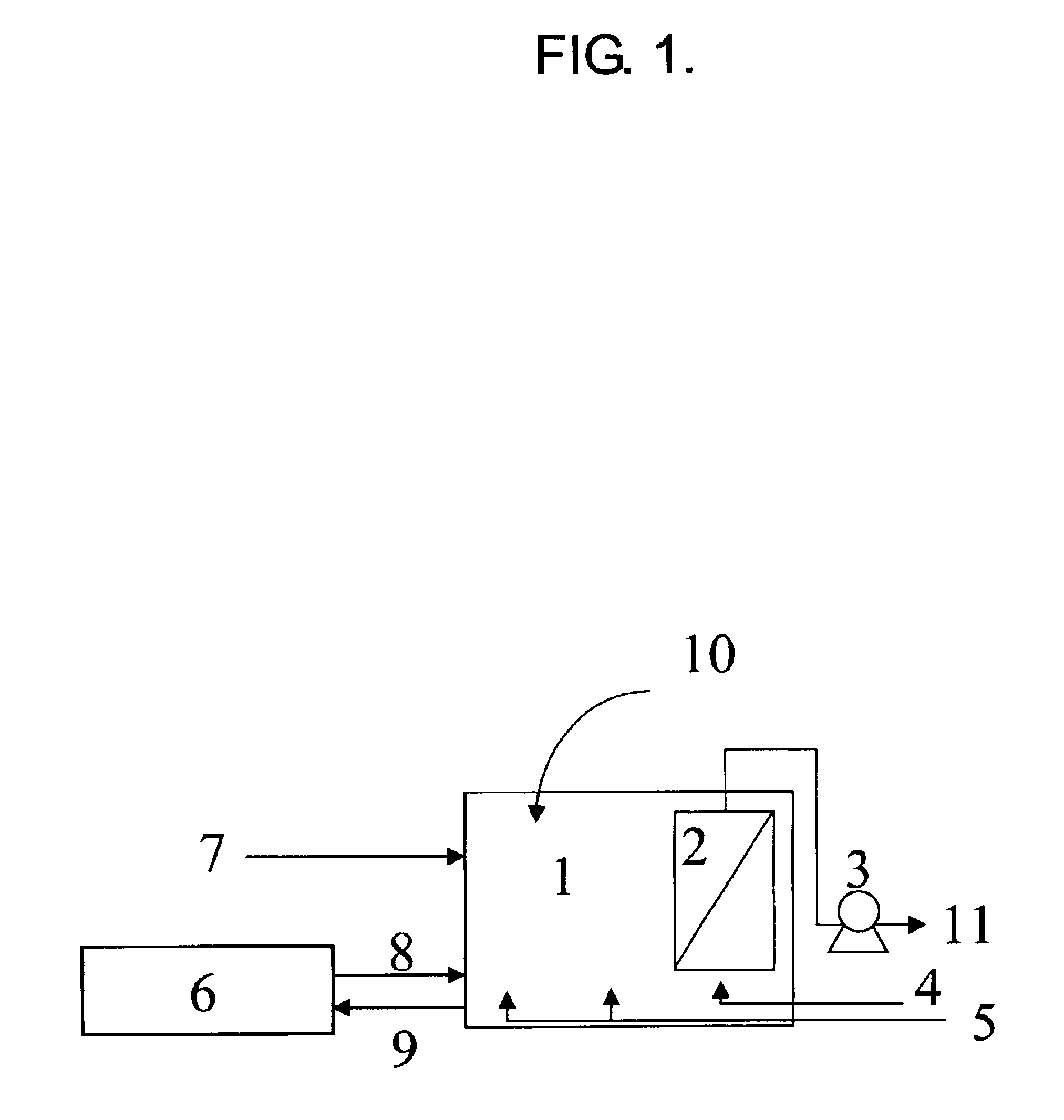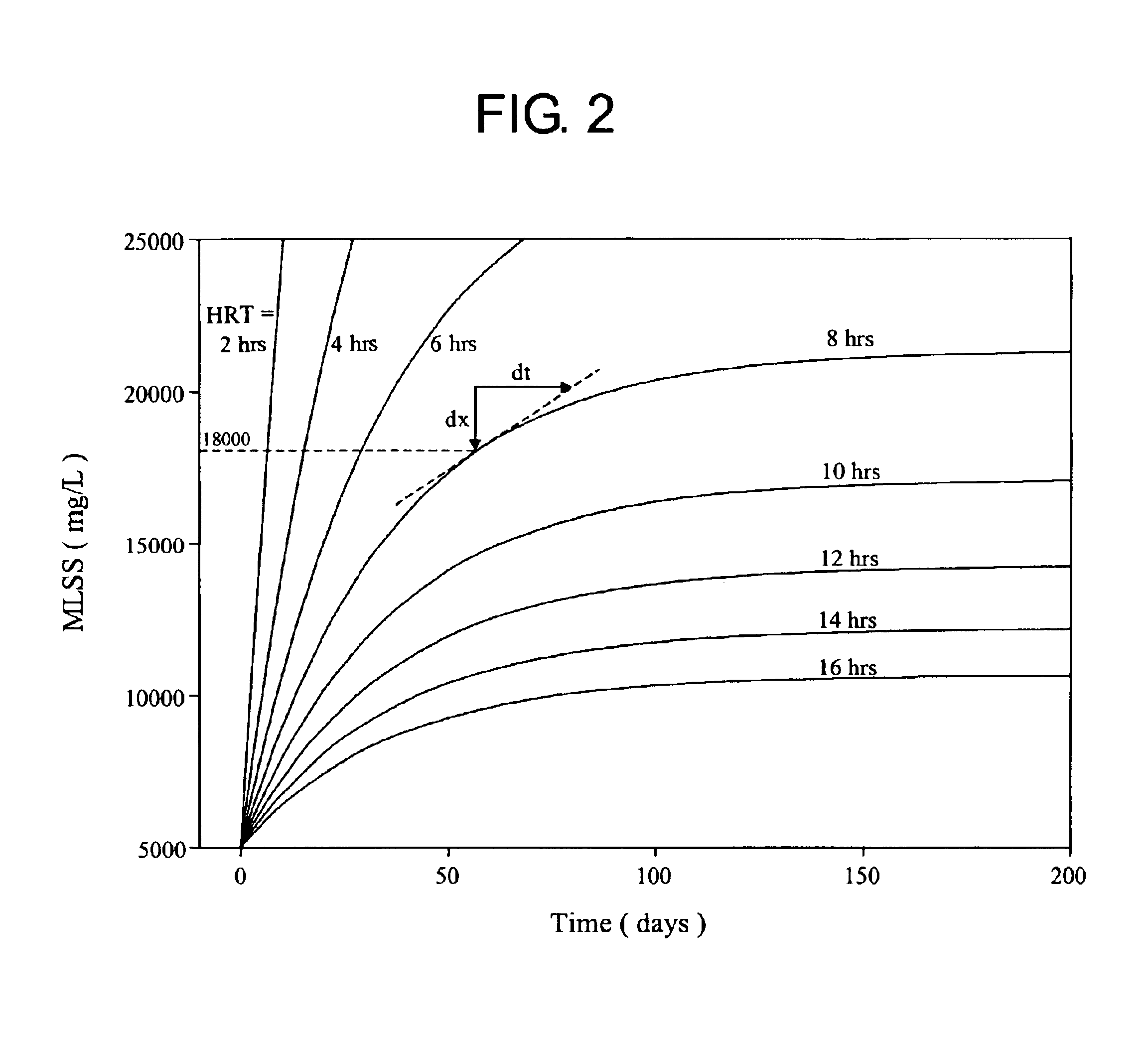Method of using water soluble polymers in a membrane biological reactor
a biological reactor and water soluble polymer technology, applied in the direction of membranes, multi-stage water/sewage treatment, separation processes, etc., can solve the problems of dramatic decrease in membrane flux, and achieve the effect of increasing the amount of time that the microorganisms remain in conta
- Summary
- Abstract
- Description
- Claims
- Application Information
AI Technical Summary
Benefits of technology
Problems solved by technology
Method used
Image
Examples
example 1
[0103]Sample of aerobically digested mixed liquor from a midwestern municipal wastewater treatment plant (TSS about 10-1.5%) is mixed with representative water soluble polymer of this invention using a paddle stirrer at 110 rpm for 5 minutes. The mixture is then placed in an Amicon Model 8400 Stirred Cell (Millipore Corporation, Bedford, Mass.) and forced through a Durapore® polyvinylidenedifluoride membrane with a nominal pore size of 0.1 micron and effective membrane area of 0.0039 m2 (Millipore Corporation, Bedford, Mass.), at a constant pressure of 26 lbs / in2 (psi). Flux is determined by weighing permeate at timed intervals on a Mettler Toledo Model PG5002S top loading balance. Weight is recorded in 2 or 6 second intervals by computer. Volume is calculated assuming density of 1.00 g / mL, and no temperature correction for density is made. Flux is calculated as follows:
J=913.7 ΔW / Δt
[0104]where J=flux (L / m2 / hour);
[0105]ΔW=difference between 2 weight measurements (in grams); and
[0106...
example 2
[0112]Excess soluble cationic polymer is measured by adding varying amounts of a representative cationic polymer (Epi-DMA) to mixed liquor from a midwestern municipal wastewater treatment plant, stirring the mixture at 110 rpm, centrifuging the mixture at 20,000 rpm for 25 minutes and then measuring the residual polymer in the centrate by colloid titration with a 0.001M solution of the potassium salt of polyvinylsulfuric acid (PVSK). The results are summarized in Table 6.
[0113]
TABLE 6Residual Polymer in Centrate in ppmPolymer ActivesPolymer ActivesIn SludgeIn Centrate0022.50450900135013504.5180079.7225021145001650
[0114]As shown in Table 6, no residual polymer is detected in the centrifuge water centrate at polymer dosages that result in substantial increases in membrane flux. Dosages 30 times more than optimum are required for excess residual polymer to begin to appear in the centrate. This is very important discovery because excess polymer is known to foul membrane surfaces resulti...
example 3
[0115]Five gallon buckets of mixed liquor are taken from a western United States MBR unit treating municipal wastewater, air-freighted overnight and tested the next day. The sample is refrigerated overnight and then warmed to room temperature for testing on subsequent days. Cationic polymer (2.0 g of a 1% polymer solution) and 198 g of mixed liquor are added to a 400 ml beaker. The mixture is stirred on a motorized stirrer for 15 minutes at 275 rpm to redisperse the solids. This mixed sludge is transferred to the Amicon cell with a polyvinylidenedifluoride membrane with nominal pore size of 0.2 microns just before the filtration test is performed.
[0116]The mixture is forced through the membrane at a constant pressure of either 15 or 8 psi. Flux was determined by weighing permeate at timed intervals on a Mettler Toledo Model PG5002S top loading balance. Weight is recorded in 2 second intervals by computer. Volume was calculated assuming density of 1.00 g / mL, and no temperature correc...
PUM
| Property | Measurement | Unit |
|---|---|---|
| molecular weight | aaaaa | aaaaa |
| molecular weight | aaaaa | aaaaa |
| molecular weight | aaaaa | aaaaa |
Abstract
Description
Claims
Application Information
 Login to View More
Login to View More - R&D
- Intellectual Property
- Life Sciences
- Materials
- Tech Scout
- Unparalleled Data Quality
- Higher Quality Content
- 60% Fewer Hallucinations
Browse by: Latest US Patents, China's latest patents, Technical Efficacy Thesaurus, Application Domain, Technology Topic, Popular Technical Reports.
© 2025 PatSnap. All rights reserved.Legal|Privacy policy|Modern Slavery Act Transparency Statement|Sitemap|About US| Contact US: help@patsnap.com



